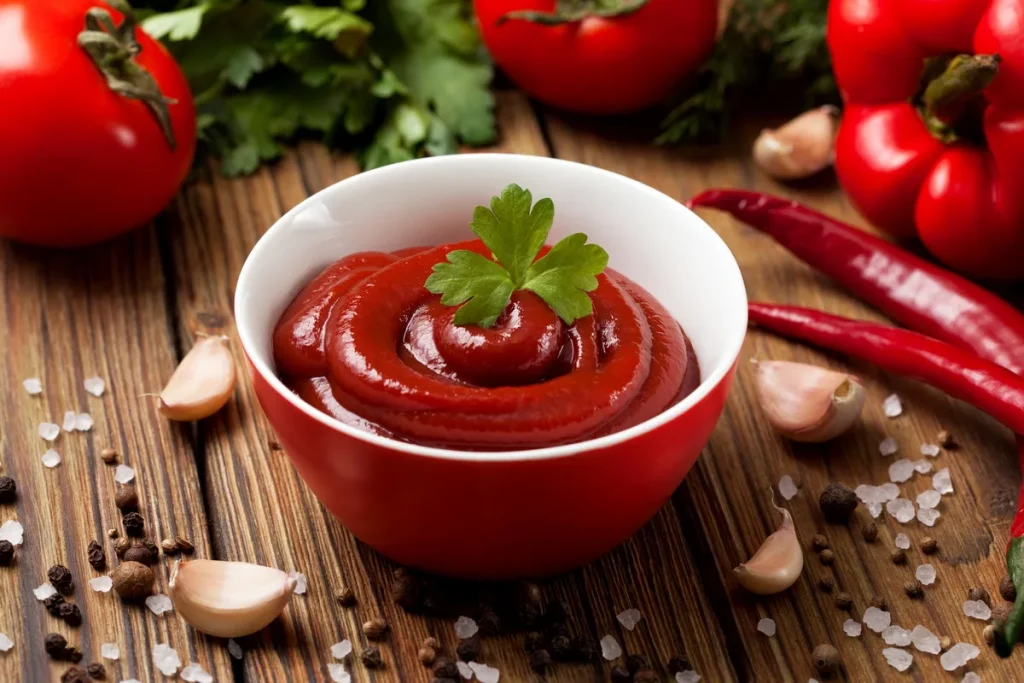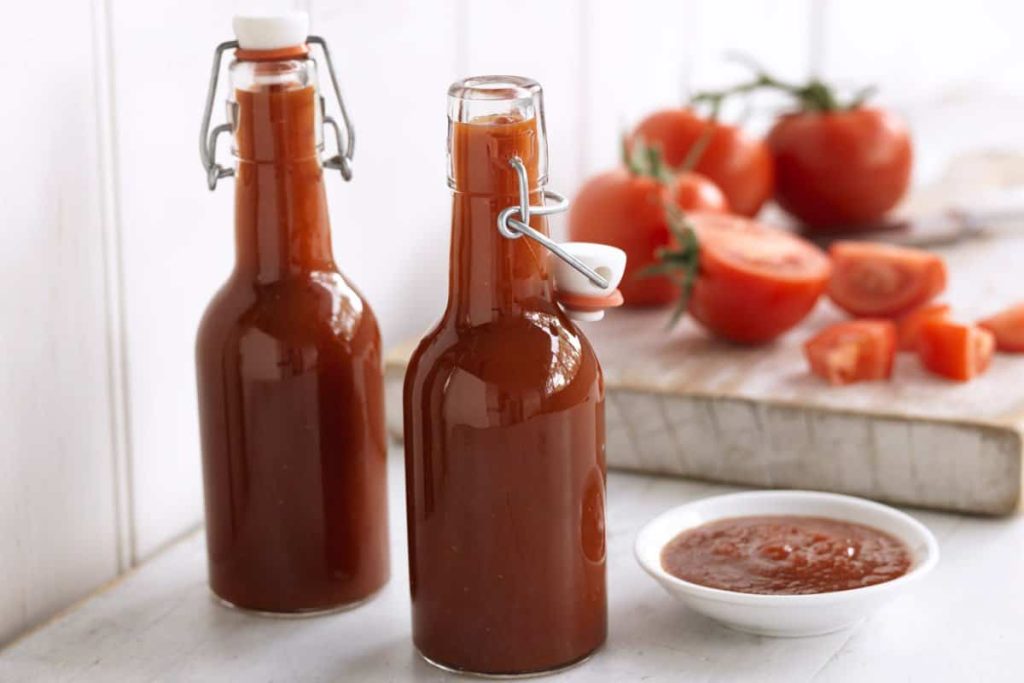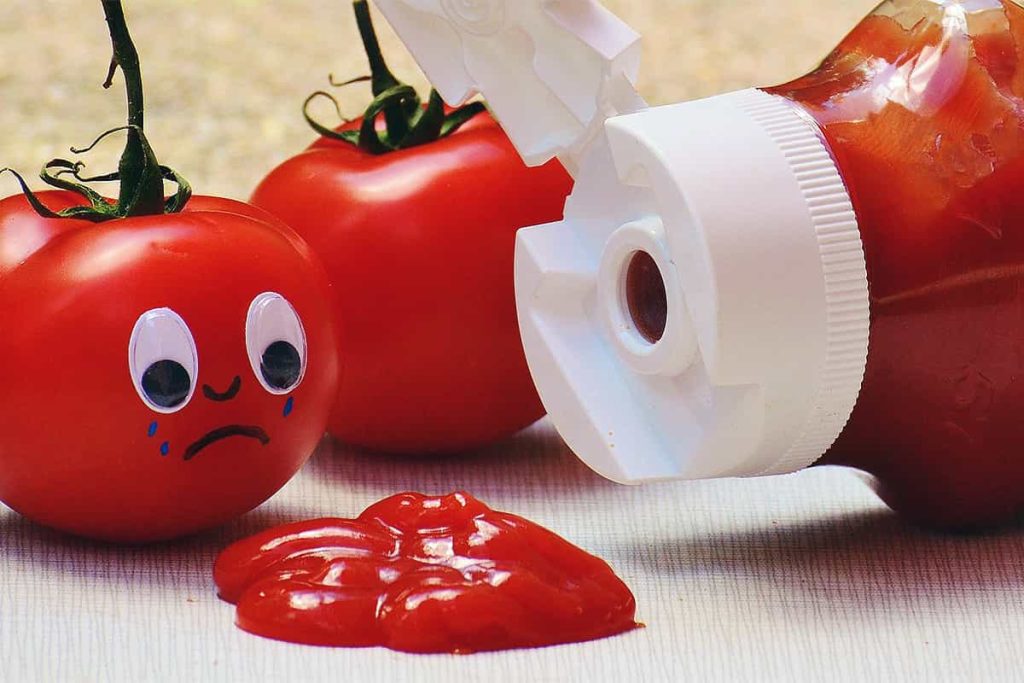It is possible to substitute ketchup sauce with other types of tomato products. Tomato paste is considered a replacement for ketchup tomato. In global, the marketing for this kind of recipe has bloomed. The trend of business for this product is on the rise.
Does tomato ketchup work well in place of tomato paste?
You might find yourself searching the cabinets for a suitable replacement if you are in the middle of a cooking frenzy and realize that you are out of tomato paste. Ketchup is one of the many items that can be used in place of what you require.
Given the availability of fresh tomatoes, canned tomatoes, and various types of tomatoes, you may be wondering whether ketchup can be used in place of tomato puree or paste.
Ketchup has a stronger flavor than tomato puree or tomato paste because of the extra vinegar and sugar, which may cause it to compete with the other flavors in the dish. Ketchup is therefore not suggested as a replacement. Alternatively, you might try reducing the quantity of fresh herbs, canned tomatoes, or bottled tomato sauce.
There is no need to panic if your supply of tomato paste runs out. This article explains that you can still cook a great dish that includes tomato flavoring even if you only have tomatoes in one of their numerous varieties.
Sauce, puree, and tomato paste are all compared and contrasted.
First things first, let’s define a few terminologies to set the record straight. One of the things that make things challenging is the fact that they go by numerous names in different countries. I’ll concentrate on the United States because that’s where most of the readers of this site are situated, but I’ll also talk about other nations.
The most concentrated form of tomato is tomato paste, which has the deepest red color, the strongest flavor, and a slightly bitter aftertaste. used to provide food with a powerful flavor during cooking, but take care not to let it overpower the dish.
Compared to tomato paste, tomato puree has a more liquid consistency because it is made from cooked and strained tomatoes.
Compared to tomato puree, tomato sauce is smoother and more liquid, and it often comes in a can.
Passata is a raw tomato purée that doesn’t contain tomato seeds or peels.

What Alternative Ingredients Are There To Tomato Paste?
There are a few other items that work well as tomato paste substitutes. What you choose to utilize will depend on your preferences, your financial situation, and the supplies you already have in your pantry or kitchen. We have compiled a list of many options with a brief description of each one for your convenience.
If you have the time, you should start by first reducing any of these ingredients in a skillet to make them more resembling tomato paste. If that doesn’t work, increase the amount of tomato paste substitute in the recipe by two times and let it boil down from there.
1. Fresh tomatoes should be used in place of tomato paste.
It could seem that tomato paste and fresh tomatoes are the furthest things from each other. Despite this, if you find that you need to, you can substitute them with tomato paste.
When using fresh tomatoes, first peel and seed them before puréeing or blending them to achieve a smooth consistency. Now is the time to add your tomatoes to the dish if the recipe calls for tomato paste.
Consider lowering the tomatoes if you want a closer substitute; stir the mixture continually until the fresh tomato has reduced to a paste-like consistency.
2. Use tomato sauce in your recipe rather than tomato paste.
Imagine that you are now in possession of a jar of tomato sauce. In that case, a large percentage of the work required to successfully replace the tomato paste has already been completed. Stir the mixture constantly while the sauce is being reduced after you’ve added it to the recipe. For each tablespoon of tomato paste called for in the recipe, substitute two to three teaspoons of tomato sauce.
3. You should use canned whole tomatoes rather than just tomato paste.
You could discover that utilizing canned tomatoes is more practical than using tomato paste. If you choose to go this way, you can either eat the tomatoes by themselves or the juice that is packaged with them.

The amount of water in the liquid outweighs the tomato paste in the can. Once you’ve added it to your recipe, be sure to stir it regularly until the size has decreased.
Three tablespoons of tomato juice that was squeezed out of the canned tomatoes should be added to every tablespoon of tomato paste.
You should read an article I created in which I compare using fresh tomatoes versus canned tomatoes for making sauces. The two tomato varieties are compared in the article.
4. Employ Passata
Passata, another type of uncooked, unconcentrated tomato sauce, is distinguished by its watery consistency. The easiest approach to imitate the strong flavor of tomato paste is to thin it out, as it is relatively similar to tomato puree or tomato sauce. For a burst of taste reminiscent of fresh tomato, you can add it in its original form without a problem.
Is there a distinction between tomato paste and puree?
Compared to tomato puree, tomato paste is far more concentrated and substantial. Meals based on tomatoes can profit from the additional flavor and body that this item offers. Because of its thinner consistency, tomato puree is frequently used to make sauces.
Because tomato paste and tomato puree are so similar to one another, it is simple to mistake one for the other. The words paste and puree are sometimes used interchangeably, however they refer to different tomato products. Let’s settle this once and for all.
The water content in tomato puree is average. Despite being most frequently found in sauces and dips, it can also be found in other foods like meatloaf and taco filling. It still comes in a can but uses less water to impart tomato flavor than standard canned tomatoes do.

Italy was the first nation to commercially produce tomato paste. Even if we don’t make it the same way as when it was first made, the flavor we get from our improved version is just as strong as it was back then.
The food we consume acquires a strong tomato flavor from tomato paste, which also improves the flavor of many other dishes. It is best to incorporate the tomato paste with the other ingredients as soon as possible in order to maximize flavor.
To make tomato paste, tomatoes are first boiled for a very long time, the skins and seeds are removed, and then the tomatoes are cooked again.
The method allows the tomatoes to concentrate into a thick paste or concentrate. In stews, soups, and even some types of meat dishes, tomato paste tastes great.
What Can Be Used in Chili Instead of Tomato Paste
You might try adding more tomato puree, canned tomatoes, or fresh tomatoes after the meal has been simmered for a while.
Leave out some of the other liquid asked for in the recipe and replace two tablespoons of tomato substitute with one tablespoon of tomato paste. By doing this, the flavor will be strong and the consistency thick.
Tomato paste is frequently called for in chili recipes since it enhances the flavor. The meal has a delightful tang from the powerful flavor, which goes well with both meat and beans.
Although using tomato paste is a convenient approach to getting a strong taste, the same effect can also be achieved by using fewer other tomato-based items.
Tomato paste adds some thickness to the chili because it is thick. If you want your child to have more body, consider adding some cornstarch or all-purpose flour mixed with a tiny bit of water.
Find a Soup Alternative to Tomato Paste
You can replace tomato paste with a variety of ingredients, but the one you choose will depend on the type of soup you are creating.

For you, I’ve put up a list of delectable options, some of which are tomato-based and others that are not. Try the substitute that you find most appealing, but don’t forget to consider how the flavor of the original dish will change as a result of employing these alternative ingredients.
peppers that have been roasted and pureed.
- sour creamtomatoes
that have been freshly puréed. When tomatoes are canned, their liquid is released.
- Tomato ketchup
- You may decide
not to use the substitute at all depending on the type of soup you are creating. Since soup normally has a moderate flavor, it is possible to properly prepare it without a concentrated tomato paste.Look for a substitute for tomato paste in the stew.
You can make your own tomato paste by heating some tomato sauce in a skillet until it thickens up before adding it to the stew. This option demands a one-to-one ratio.
Who can refuse a stew that is both warm and filling on a chilly day? Many stew recipes call for the use of tomato paste in addition to tomato sauce or fresh tomatoes.
Tomato paste is a simple ingredient to substitute in a stew because it frequently needs a very long cooking time to produce its flavor.
Conclusion
I hope you now see that ketchup is not a good substitute for tomato paste in most cuisines. The dish’s strong vinegar flavor typically clashes with other ingredients like pasta, soups, or stews.
Our website appears on the first page of a google search, demonstrating the worth and reputation of our worldwide export company on a global scale.
Our export business has an edge over other companies around the world in that it offers special price breaks to customers who make additional purchases.











Your comment submitted.